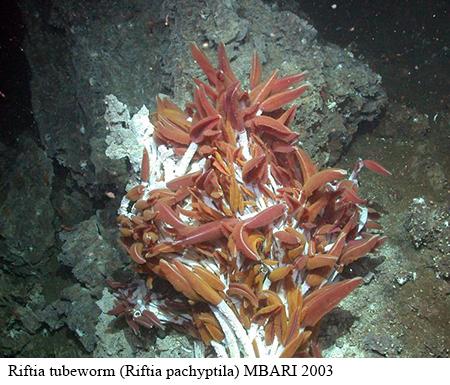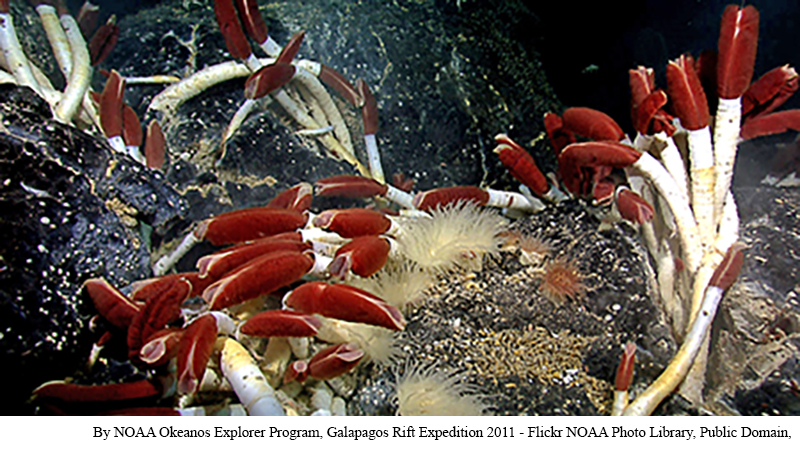
Not only do these worms live where few other organisms dare go, they have a unique body plan and way of life. The worms have no digestive tract, mouth or anus. Instead of feeding like most other animals, these worms depend on symbiotic bacteria inside them that convert the hydrogen sulfide, carbonates or hydrocarbons (depending on the mineral content of the water) from the vent water into organic compounds for energy . It’s like how plants convert the sun’s energy to nutrition only it’s chemically based, called chemosynthesis.
This video explains the discovery of the vent worms and explains how they survive.
The giant tubeworms are polychaete annelids that reproduce and have a life-cycle like other polychaetes with free-swimming larvae. Currents transport the planktonic larvae until they reach active hydrothermal vents sites. Once they’ve reached a hydrothermal vent site, the larvae settle, acquire the symbiotic bacteria and grow quickly to a large size. Some hydrothermal vent worms can grow to over six feet tall. How vent sites are colonized and communities form is an area of active research.
More
Deep-sea expedition photos and video
Read about the bacteria inside the worms
From MBARI on colonization

















